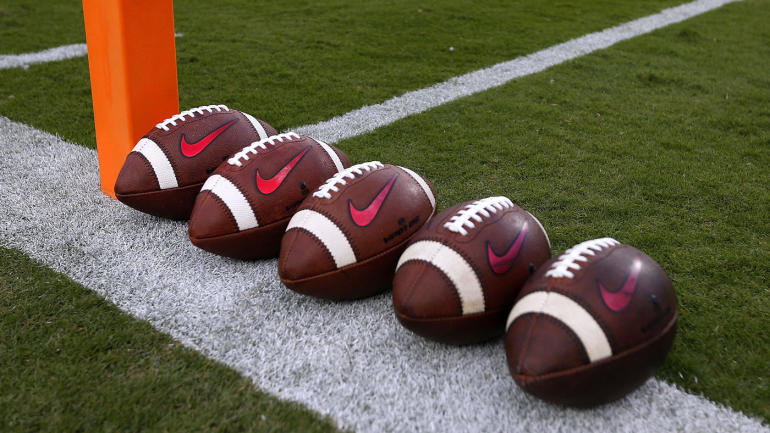
A Pac-12 football coach called recently, almost frantic. "You've got to expand rosters," he said. "Gotta have more." He was speaking of the near certainty that athletes in fall sports will be granted some kind of eligibility relief amid the COVID-19 pandemic.
The NCAA Division I Council is expected to formally recommend that additional year of eligibility at its Wednesday meeting. The NCAA Board of Governors could adopt the measure as early as Friday.
The rule would apply to all fall sports including football possibly being played in spring 2021 by the Big Ten, Pac-12 and Mountain West.
As always seems to be the case with these complicated NCAA issues, there are qualifiers.
That Pac-12 coach was worried about his seniors being given an extra year of eligibility because his 2021 roster will eventually be populated a new recruiting class. If a significant number of would-be graduating seniors stayed for an extra year, the coach suggested he might need 100 scholarships as opposed to the limit is 85. And that roster relief may need to extend past 2021.
That might make perfect sense. It also might upend the sport.
"This isn't a normal year," said West Virginia athletic director Shane Lyons, a member of the NCAA Council. "If we're really serving the student-athletes, why not just give this year of eligibility? The downside is people are going to say you're going to have an issue at the back end with a [roster] bottleneck. That always works itself out."
In this one-off year, a lot of things may have to "work out." The council recommended last week that athletes who opt out of the season or appear in less than 50% of their scheduled games could get back that year of eligibility.
But why apply any limits at all? The athletes have been through hell this year. Lyons is in favor of a blanket year of eligibility without any limitations.
"Given what we're facing right now, let's ease the mind of the student-athlete," said Lyons, who is also the chairman the NCAA Division I Football Oversight Committee.
Coaches are worried about having to shoehorn in extra scholarships. They won't say it out loud, but they might not want all those seniors back. In that sense, they would have to be held to an ethical standard. They can't be allowed to switch those extra scholarships to the most talented players.
"If you're going to do something like that, you've got to link [eligibility] to kids who got screwed by COVID," said a former member of the council.
ADs will have to decide if they want to extend financial aid that carries over to that extra year.
Shortly after the NCAA canceled its basketball tournament in March, it probably made its most positive public relations move of this pandemic. It issued a blanket eligibility waiver for seniors playing spring sports. They all got an extra year of eligibility.
However, schools were given the option of covering that extra year with scholarship money. Wisconsin didn't seek waivers for an extra year, essentially ending seniors' careers in the middle of a pandemic.
At the time, Wisconsin AD Barry Alvarez called the NCAA's move "an overreaction."
That same financial stress extends to this decision. Schools now know better the length and breadth of their budget shortfalls.
They may be in favor of that extra year of eligibility, but if they're not willing to back it up with scholarship money, what's the point?
Such a consideration would impact fifth-year seniors and those who have already burned their redshirt year. Athletes have five years to play their four seasons of eligibility. The Power Five conferences already guarantee four-year scholarships.
Lyons said he's not sure what kind of support there is for mandating scholarship money to go along with that extra year of eligibility.
Not all those players are going to want to return, of course. Some will see that 50% threshold and drop out before hitting it, preserving their eligibility but adding more roster concerns by coaches.
In football, playing 50% of the contests normally equals six games -- half of a 12-game regular season -- but none of the active FBS conferences are playing a full schedule. The council could end up at 50%, extend it to 75% or issue that blanket waiver.
"Am I going to get five games into this and feel, 'This is really dumb. Did I just waste a year of eligibility?' that former council member proposed. "I don't think we should be having to ask that last question. I think we should give them [blanket] relief from having to worry about that."
There is also the question of what to do with early enrollees in football. Some Big Ten, Pac-12 and Mountain West athletes could theoretically play two seasons in one calendar year. Would those freshmen enrolling in January be burning two years of eligibility before 2022?
"Good question," Lyons said. "We need to answer that regardless of the 50% rule or a free year of eligibility."
From the beginning, coaches have been concerned about roster management meshing with that extra year of eligibility. The NCAA has extended the current recruiting dead period to Sept. 30. It's not clear how signing day(s) would work with football being divided into two semesters.
It's possible FBS teams may be playing games during both signing periods as currently scheduled: Dec. 16 and Feb. 3.
"I hope they grant eligibility back, then I would hope they would help coaches with roster management," North Carolina coach Mack Brown said. "One over [the 85 limit] is too many. Then you've got to go back and tell someone you've offered a scholarship that you can't take them."
"Coaches are going to want, want, want," Lyons concluded. "We're going to have to adjust. We're not going to use COVID as an excuse for everything. Some can argue right now that 85 is too many."
















